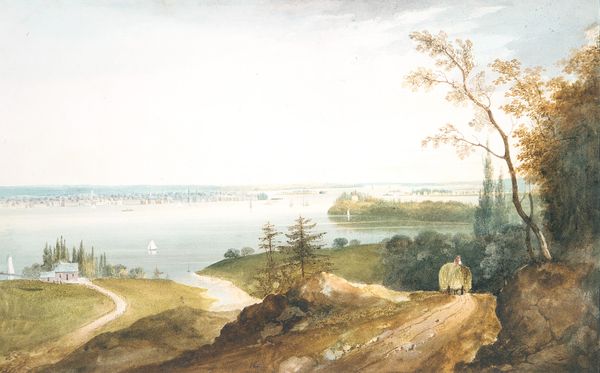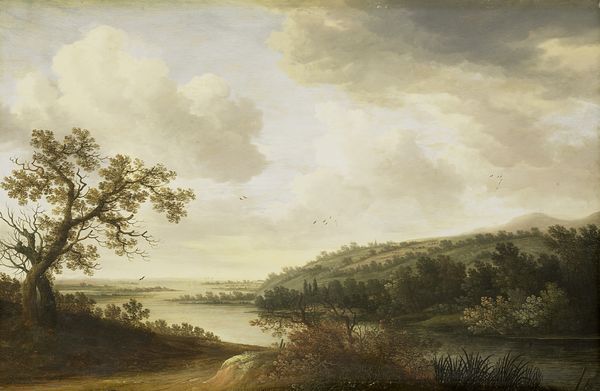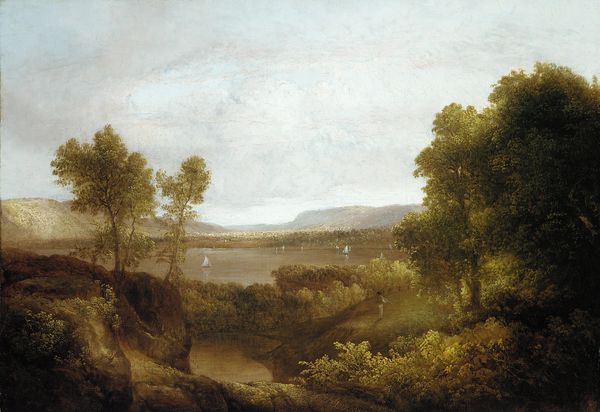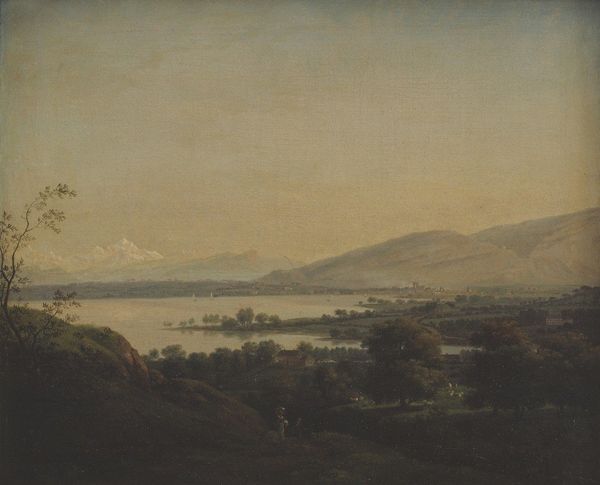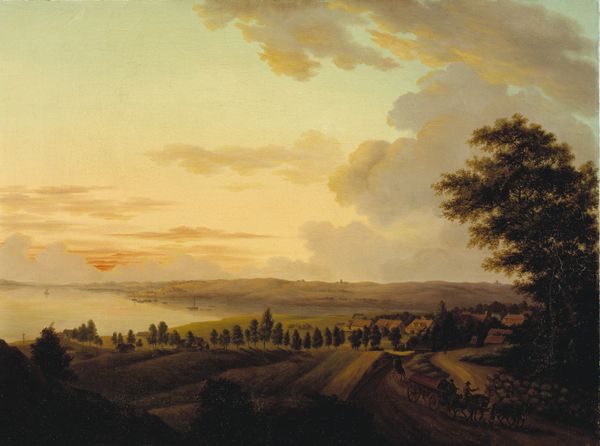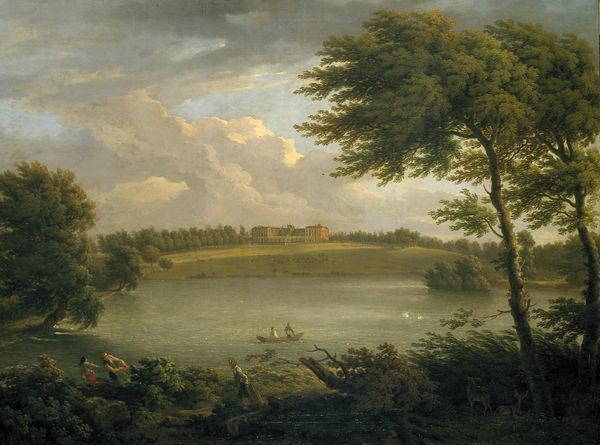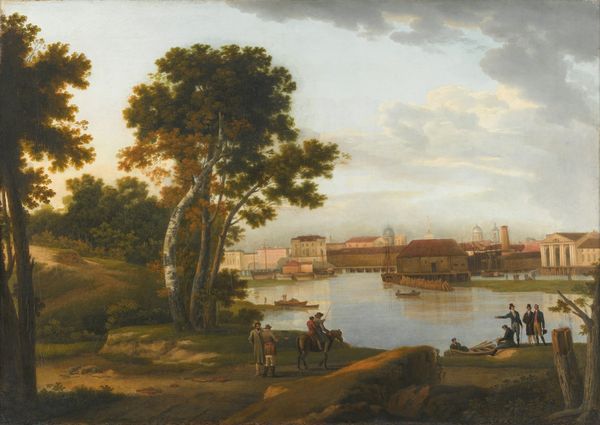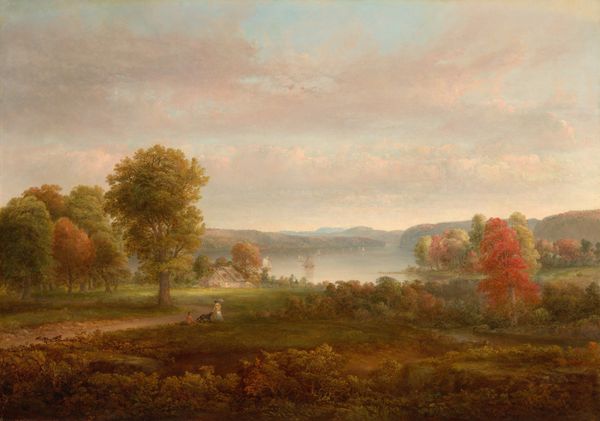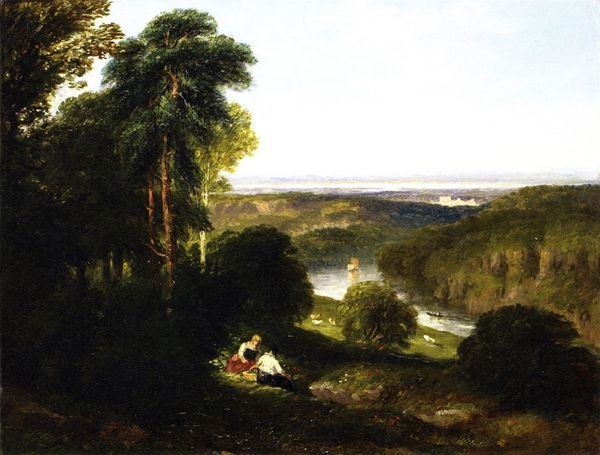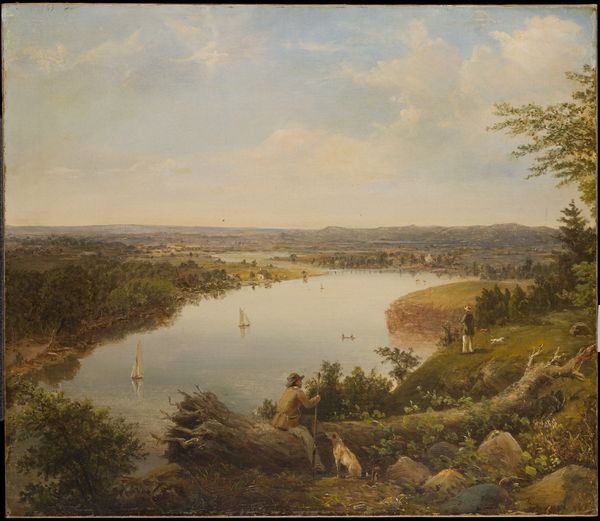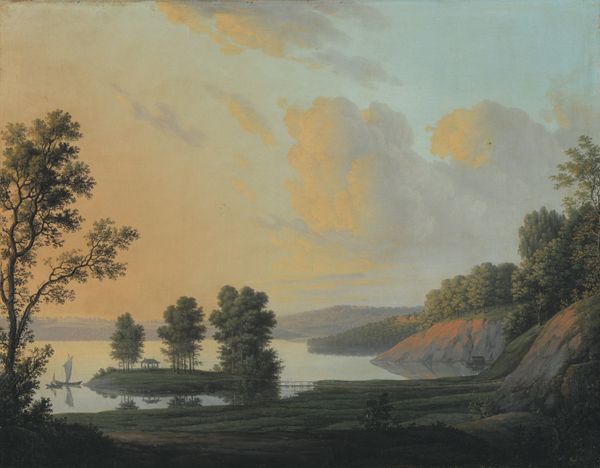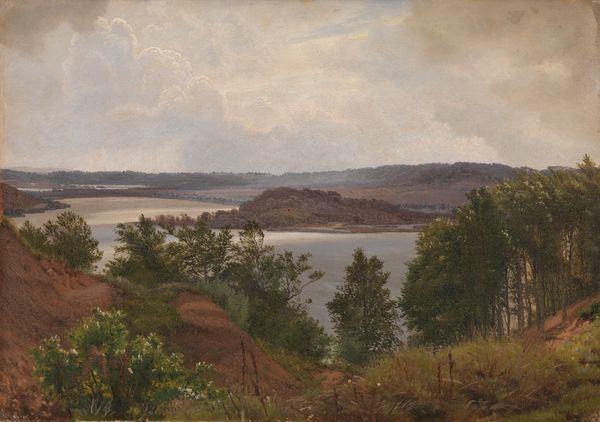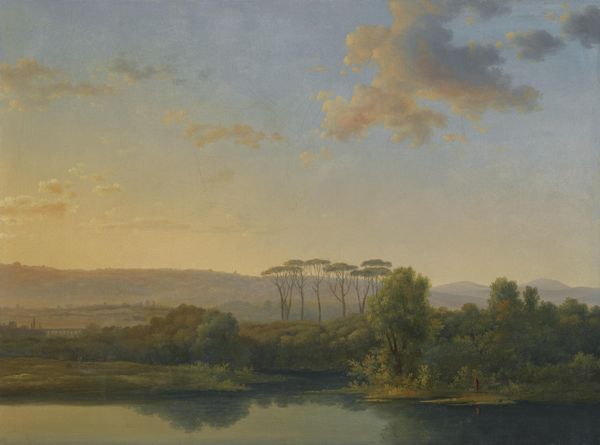
View of the Bay and City of New York from Weehawken 1840
0:00
0:00
painting, plein-air, oil-paint
#
painting
#
countryside
#
plein-air
#
oil-paint
#
landscape
#
nature
#
oil painting
#
romanticism
#
hudson-river-school
#
united-states
#
cityscape
#
realism
Dimensions: 24 x 33 in. (61 x 83.8 cm)
Copyright: Public Domain
Editor: This is "View of the Bay and City of New York from Weehawken" by Robert Havell Jr., painted in 1840 using oil on canvas. What strikes me immediately is the way he juxtaposes the tranquility of the foreground with the burgeoning cityscape in the distance. How do you interpret this tension between nature and urban development in the context of the 19th century? Curator: It’s a wonderful observation! The Hudson River School, to which Havell belonged, was deeply concerned with America's changing landscape. This painting, viewed through a historical lens, really highlights the romanticized, almost idealized view of nature that was juxtaposed against the rapidly expanding urban and industrial landscape. Notice how the composition is structured— the untamed nature in the foreground almost ‘frames’ the city. Editor: So, it’s a statement on the perceived loss of wilderness? Curator: Partially, but it's more nuanced than that. It's about establishing an American identity through landscape painting, celebrating its beauty even as industrialization encroached. What do you think is the significance of depicting the scene from Weehawken, New Jersey, rather than from within the city itself? Editor: Perhaps it's about maintaining a distance, a separation, a deliberate choice to observe rather than immerse in the urban sprawl. It also subtly suggests that even in the face of rapid development, vantage points of unspoiled beauty still existed. Curator: Precisely! Havell isn't just painting a picture; he’s crafting a visual narrative about progress, identity, and the American landscape, all framed within the context of a specific historical moment. The very act of documenting it contributes to a developing cultural memory. Editor: I never considered that the vantage point itself could be so loaded with meaning. I now see how landscape painting, especially in the 19th century, plays a role in shaping and reflecting the evolving socio-political and environmental perspectives of the time. Curator: Exactly. The romantic lens and realistic technique highlight the push and pull between what was, what is, and what's becoming. It's all interwoven within the brushstrokes.
Comments
No comments
Be the first to comment and join the conversation on the ultimate creative platform.
